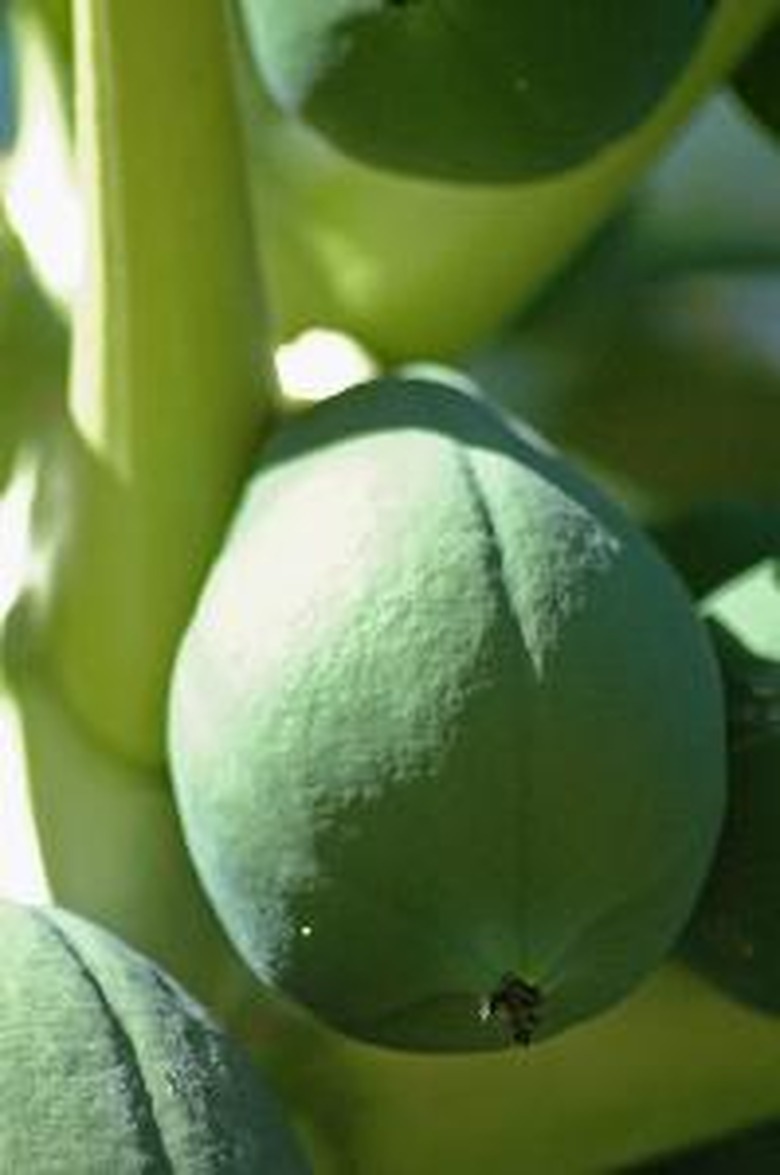What Kind Of Fertilizer To Use On Papaya Trees?
Papaya trees produce a succulent tropical fruit that is eaten fresh, dried or cooked. Papaya trees are native to Central America and Mexico but are now grown in tropical and sub-tropical climates across the globe. There are male, female and hermaphroditic plants, but the only the female tree produces fruit. Moderately warm temperatures, plenty of water and fertilizer are required for the papaya to produce a crop.
Identification
Papaya trees can grow up to 33 feet tall and have a single trunk covered in rough gray bark. The leaves are lobed and palmate, but last only 6 to 8 months before they defoliate. There are three types of trees, each of which carries a different flower. Only the trees with female flowers get to fruit regularly but sometimes the bisexual plants carry some fruit. The fruit is an oblong berry with one end slightly smaller. It is green when unripe and ages to a golden yellow or orange with possible blushing at the ends. The center contains round black seeds and the flesh is soft and sweet.
Cultivation
Papaya trees have weak wood and do not do well in windy sites. Extremes of any type, whether it be weather or moisture, are not appropriate for the tree. Temperatures up to 90 degrees Fahrenheit but not below 60 degrees Fahrenheit are ideal growing conditions. The plant will survive temperatures below 31 degrees Fahrenheit. The trees require full sun with plenty of space between plants. Papaya do well in any variety of soils as long as there is good drainage and they are watered frequently. Frequent applications of fertilizer are necessary for maximum flowering and fruiting. The tree needs to have a 5-foot area clear of competitor species around the trunk. Papaya trees do not need pruning.
Fertilizer Requirements
Newly planted trees are fertilized after three months every fourteen days with 1/4 lb. of NPK fertilizer with magnesium. Nitrogen, phosphorus and potassium are commonly called NPK. as the trees age they need 1 to 2 lbs. of balanced fertilizer every other month. Once a month the trees need an application of minor nutrients like manganese and zinc. Some growers recommend more frequent but smaller applications of the same overall amount. Fertilizer application is halved during winter months when the plant is not actively growing.
Problems
In addition to its intolerance for extremes of condition, papaya trees have a number of pest problems. The papaya fruit fly, web fly and web worm are specific to the plant. The common two spotted mite and several nematodes are known pests of papaya trees. Diseases are mostly limited to fungal which do not kill the trees but can stress them and reduce vigor enough that crop production is affected. Any damage to the wood can weaken the tree or even kill it so care needs to be taken with weed eaters and mowers. Removal of weeds is best done by hand.
